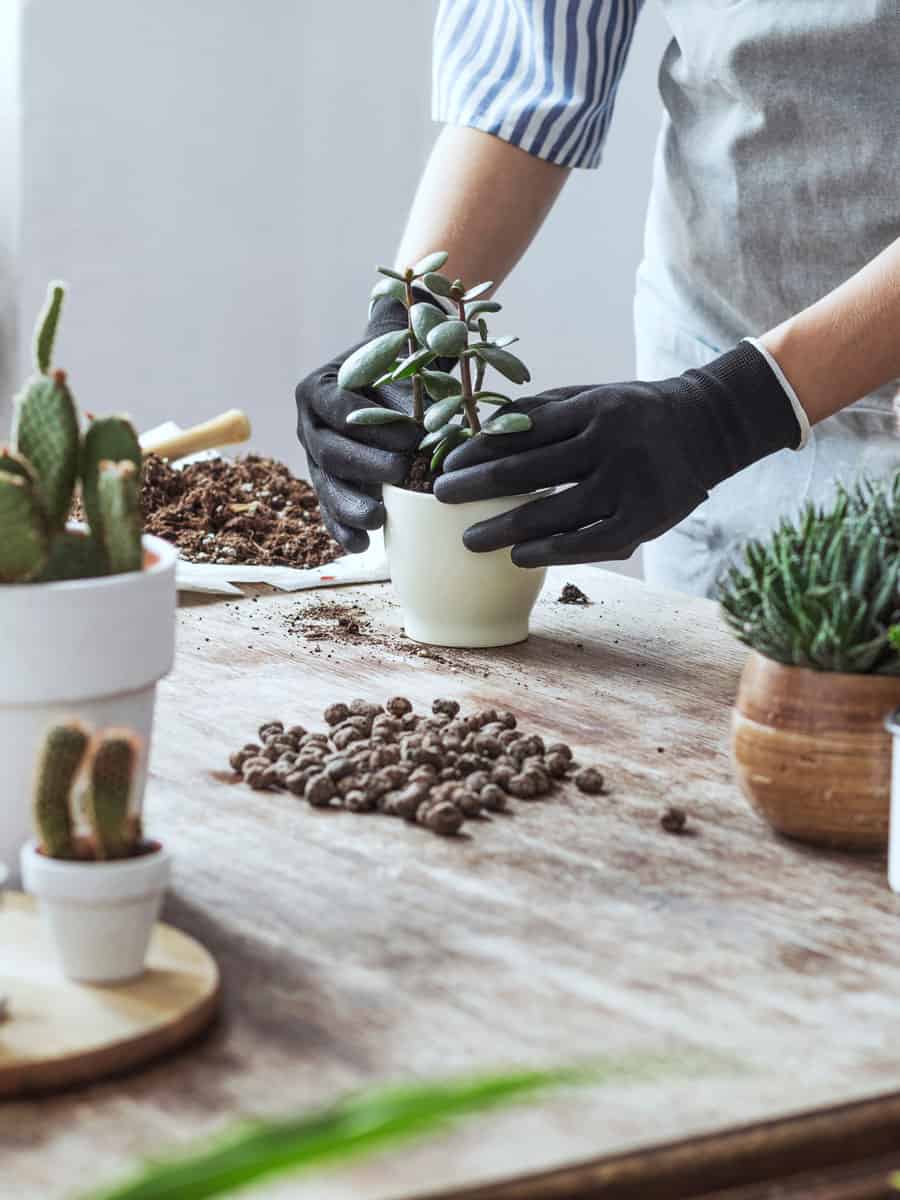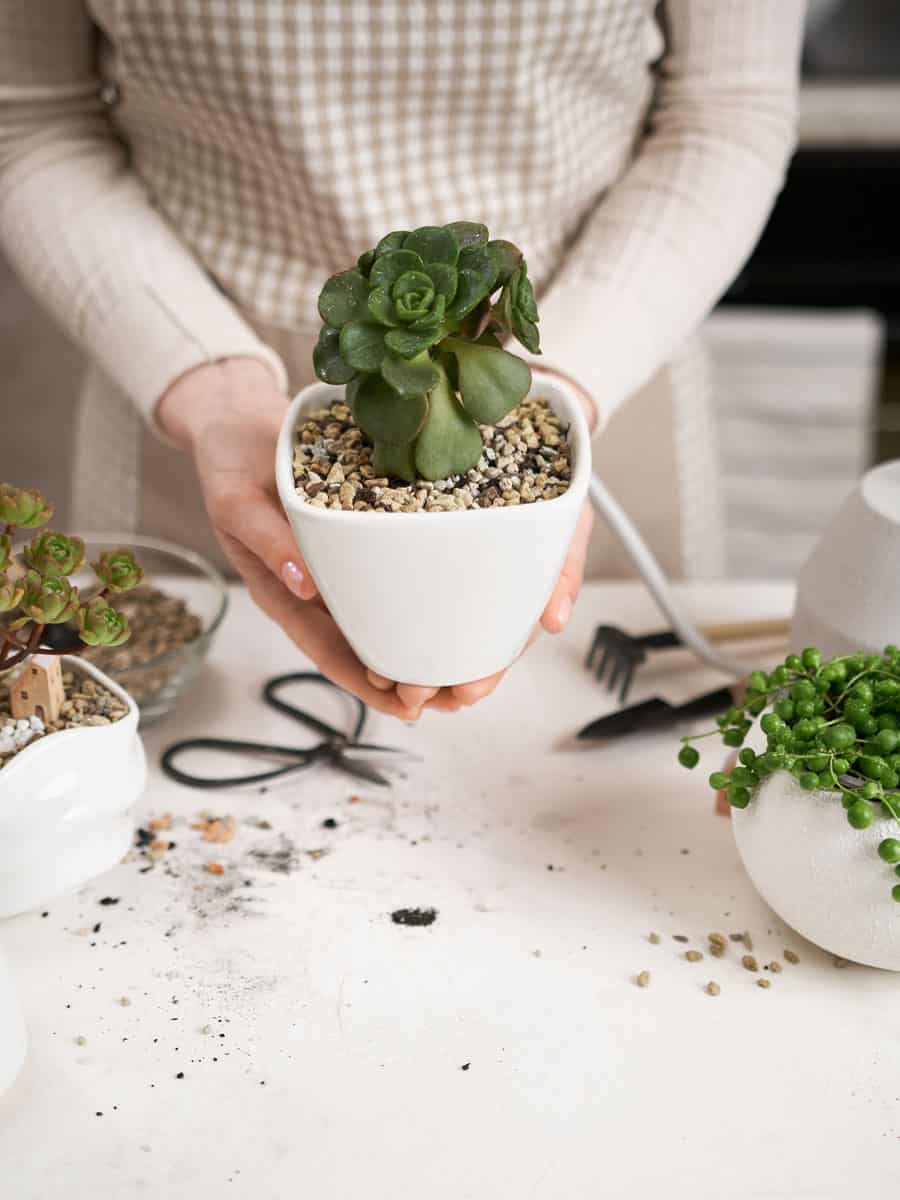Their low-maintenance appeal is undeniable, making them a top pick for many plant enthusiasts. Yet, this ease doesn't come without its caveats.
Indoor environments can introduce unique issues, from unexpected growth hurdles to skin irritation risks. Understanding these subtleties is crucial not only for successful succulent care but also for your safety.

Learn how to navigate these indoor gardening challenges, ensuring your succulents survive and thrive within your home.
Light, Soil, and Humidity Challenges
As you may already know, succulents thrive in the sun, but indoors, they often miss out on the six to eight hours of sunlight they crave, leading to less vibrant leaves and stunted growth.
The problem extends to their living quarters, too. Pots without drainage holes invite unwelcome guests like root rot and fungal diseases (more on this later).
And the typical store-bought mix might be too moist for your desert-loving plants. Humidity is also an issue. These plants prefer a drier setting, but indoor spaces can be humid.
Nutritional Deficiencies
Just like their need for sun and the right soil, succulents also depend on specific nutrients they usually soak up outdoors.
In their natural habitat, succulents effortlessly absorb essential nutrients from the soil. Nitrogen, vital for leaf development, is abundant in earthy environments.
Phosphorus, key for robust root systems, and potassium, necessary for blooming and overall health, are also readily available in outdoor soil.
Without these nutrients, your succulents may show signs of distress. Look out for chlorosis, where leaves turn yellow due to a lack of chlorophyll.
Interveinal chlorosis, stunted growth, and even necrosis (death of plant tissue) can occur.
Root Rot and Fungal Diseases

As mentioned earlier, lack of drainage and overwatering often welcome sneaky invaders like root rot and fungal diseases.
Indoor conditions, often lacking the natural drying elements like wind and sun found outdoors, can exacerbate these problems.
Succulents need a fine balance of moisture, and excess water can be detrimental, leading to soggy roots. Likewise, fungi love moist conditions, making this a double-trouble situation!
So keep an eye out for symptoms like yellowing or browning leaves, a mushy base, soft stem, or black patches on leaves, as these are often the first signs of a rot or a fungal attack.
If you're worried about overwatering, be sure to check out our simple tips on how to keep your succulents just right without giving them too much water.
Risk of Mold and Mildew
The presence of mold and mildew is another threat to watch out for. As we've pointed out, our homes can get a bit too moist without us even realizing it, and that's a perfect setup for mold.
Also, you may unknowingly overwater your plants, leading to damp soil conditions ideal for mold and mildew growth.
Lastly, stagnant air doesn't just make a room feel stuffy—it also contributes to the spread of mold spores.
Toxicity to Pets and Allergic Reactions
If you have pets, always check the toxicity of each succulent before bringing it into your home. Here are some succulents that you should watch out for your pets:
| Common Toxic Succulents | Potential Effects on Pets |
|---|---|
| Euphorbia | Skin and mouth irritation |
| Kalanchoe | Gastrointestinal upset |
| Aloe Vera | Vomiting and diarrhea |
You can look up ASPCA for a more comprehensive list of succulents that are safe and those to avoid.
As for humans, some individuals might experience allergic reactions to certain succulents. These reactions can range from skin rashes to eye redness if one is particularly sensitive.
It's recommended to wear gloves when handling your plants to minimize skin contact with irritants, especially if you're prone to allergies.
You'll also want to keep a close eye on both young children and pets, as they might unknowingly touch or ingest plant parts.
Pesticide Use Indoors
When dealing with pests in your home, reaching for pesticides might seem like the go-to solution. But it's important to be aware of the risks of using them indoors.
The health implications can't be overlooked—pesticides can be harmful to both humans and pets. So, you'll want to stick to products that are specifically designed for indoor use. These are safer options, according to experts.
That said, pesticides should really be your last line of defense. Before you go that route, give non-chemical approaches a shot. This includes keeping things clean and physically removing pests where you can.
If you do need to use pesticides, choose sprays, dust, or baits, and make sure to follow the manufacturer’s instructions in the letter.
And a crucial point to remember—never, ever use pesticides intended for outdoor use inside your home.
In Summary: Addressing the Unseen Challenges of Indoor Succulent Care
Caring for succulents indoors brings unique challenges, but don't let that deter you. Vigilance against overwatering is key, as succulents prefer dry conditions and can fall victim to root rot if kept too moist.

It's not just about giving less water but watering correctly—make sure your soil is completely dry before giving your plants a good soak.
By paying attention to these aspects of care, you can ensure your succulent stays healthy and vibrant indoors.
And remember to adjust your routine as the seasons change and your plant goes through different stages of growth!
